EVGA GeForce GTX 1660 Super SC Ultra Compute Related Benchmarks
As we move along with the GPU testing we felt it was time to clean up our database and results in graphs, we have dropped the Silent and OC results for each card and kept the fresh out of box numbers. Doing so made our graphs much easier to read, many users here at STH do not run cards in those configurations or simply cannot do so in Linux based systems so this was warranted. We still have our test numbers and might revisit those settings later on.
Geekbench 4
Geekbench 4 measures the compute performance of your GPU using image processing to computer vision to number crunching.
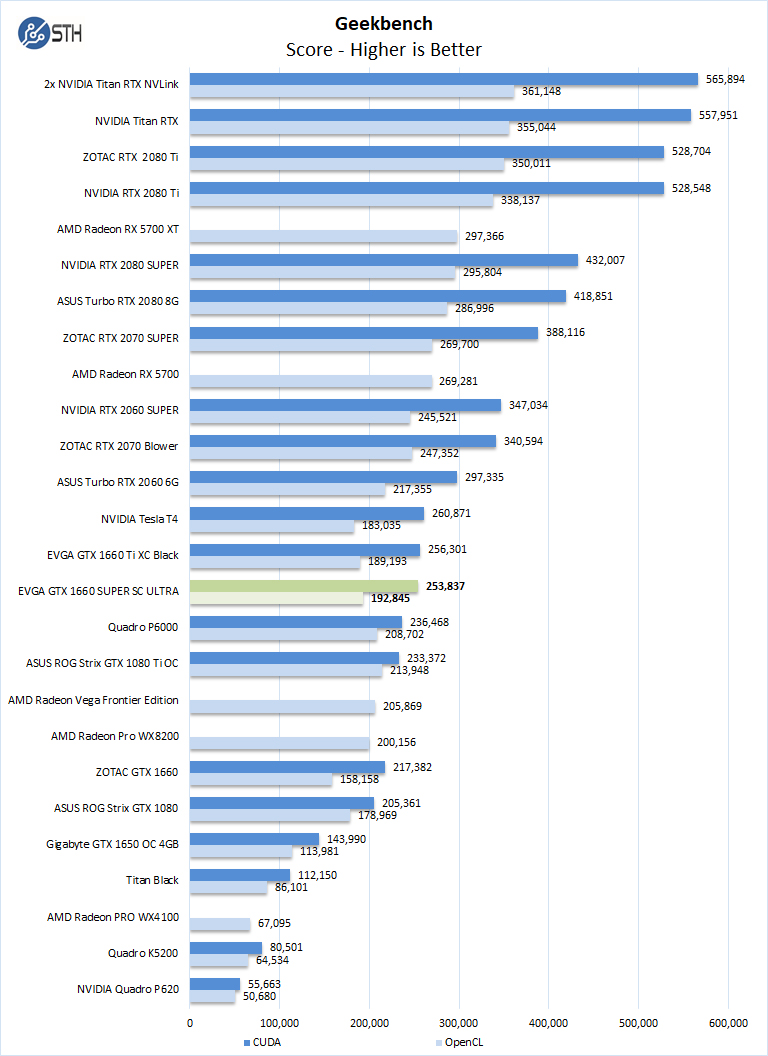
Our first compute benchmark we see the EVGA GeForce GTX 1660 Super SC Ultra achieve results close to the EVGA GTX 1660 Ti XC Black. This will be a scenario we will see in the following benchmarks. The card is close, but not necessarily always better than the Ti version.
LuxMark
LuxMark is an OpenCL benchmark tool based on LuxRender.
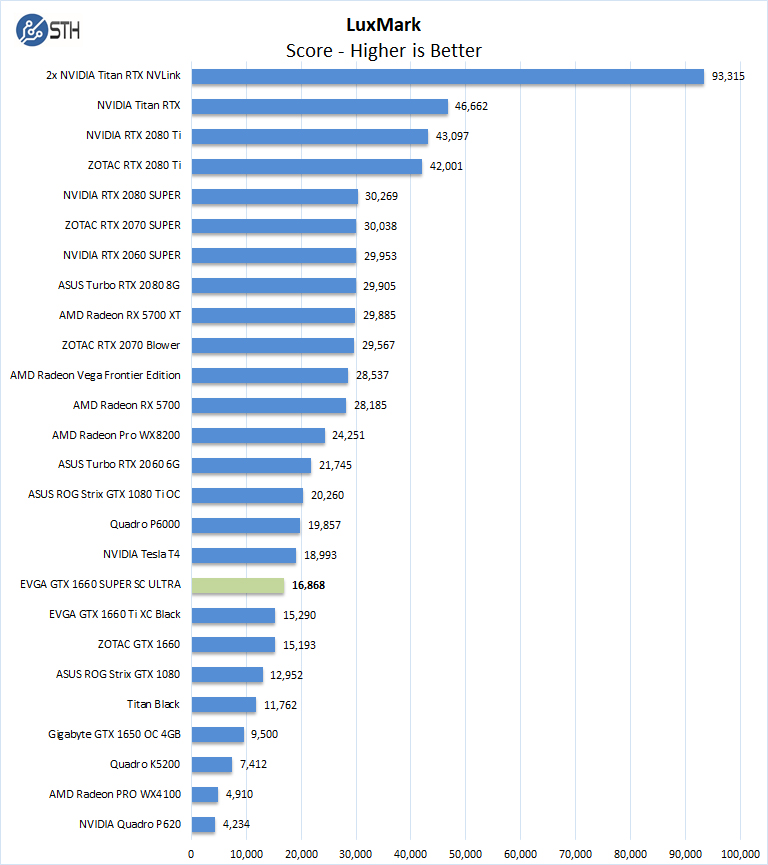
With LuxMark results, we find the NVIDIA GeForce GTX 1660 Super is just a bit faster than the GTX 1660 Ti. Memory bandwidth matters.
AIDA64 GPGPU
These benchmarks are designed to measure GPGPU computing performance via different OpenCL workloads.
- Single-Precision FLOPS: Measures the classic MAD (Multiply-Addition) performance of the GPU, otherwise known as FLOPS (Floating-Point Operations Per Second), with single-precision (32-bit, “float”) floating-point data.
- Double-Precision FLOPS: Measures the classic MAD (Multiply-Addition) performance of the GPU, otherwise known as FLOPS (Floating-Point Operations Per Second), with double-precision (64-bit, “double”) floating-point data.
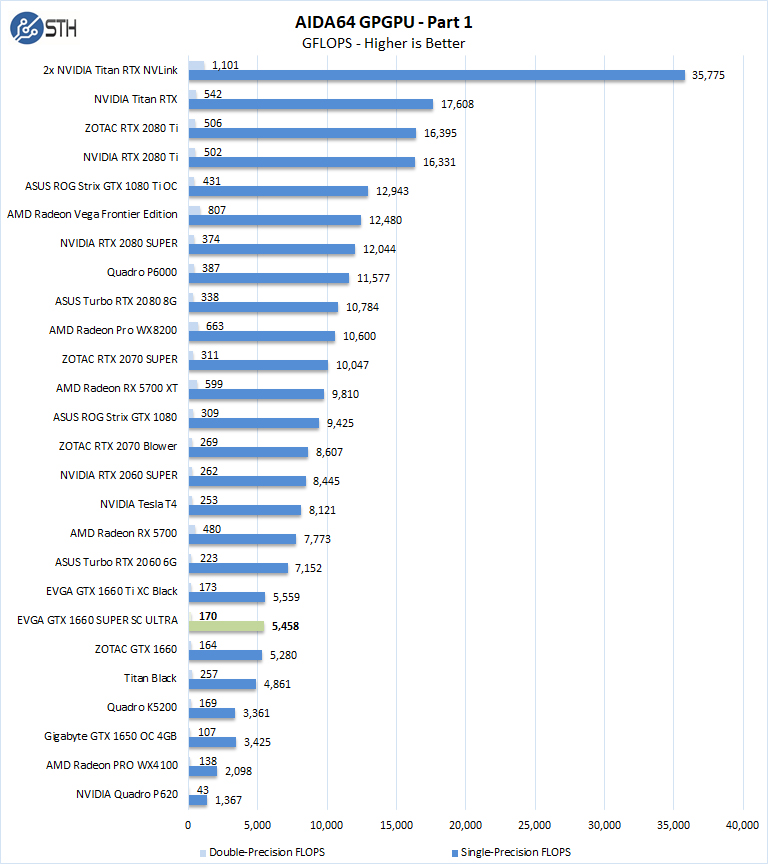
We are going to move to the integer side before we discuss the results.
The next set of benchmarks from AIDA64 are.
- 24-bit Integer IOPS: Measures the classic MAD (Multiply-Addition) performance of the GPU, otherwise known as IOPS (Integer Operations Per Second), with 24-bit integer (“int24”) data. This particular data type defined in OpenCL on the basis that many GPUs are capable of executing int24 operations via their floating-point units.
- 32-bit Integer IOPS: Measures the classic MAD (Multiply-Addition) performance of the GPU, otherwise known as IOPS (Integer Operations Per Second), with 32-bit integer (“int”) data.
- 64-bit Integer IOPS: Measures the classic MAD (Multiply-Addition) performance of the GPU, otherwise known as IOPS (Integer Operations Per Second), with 64-bit integer (“long”) data. Most GPUs do not have dedicated execution resources for 64-bit integer operations, so instead, they emulate the 64-bit integer operations via existing 32-bit integer execution units.
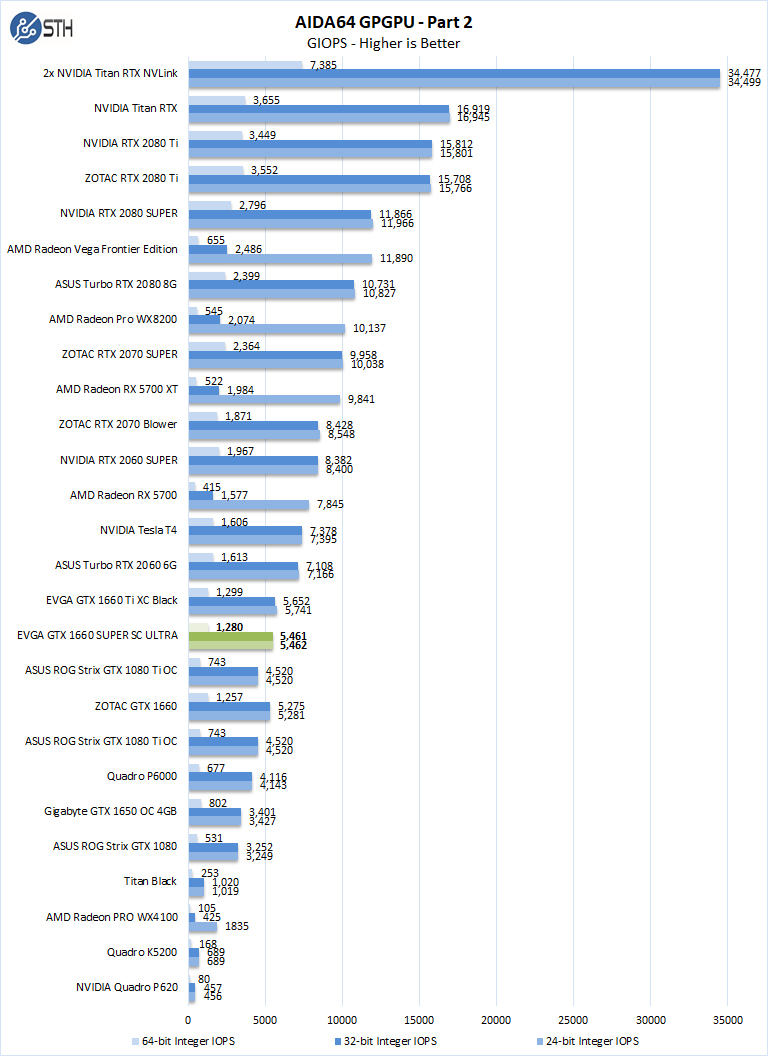
With more compute resources, the GeForce GTX 1660 Ti is consistently faster. If you are using integer workloads, a $230 card now outpaces the GeForce GTX 1080 Ti 11GB which is impressive.
hashcat64
hashcat64 is a password cracking benchmarks that can run an impressive number of different algorithms. We used the windows version and a simple command of hashcat64 -b. Out of these results we used five results to the graph. Users who are interested in hashcat can find the download here.
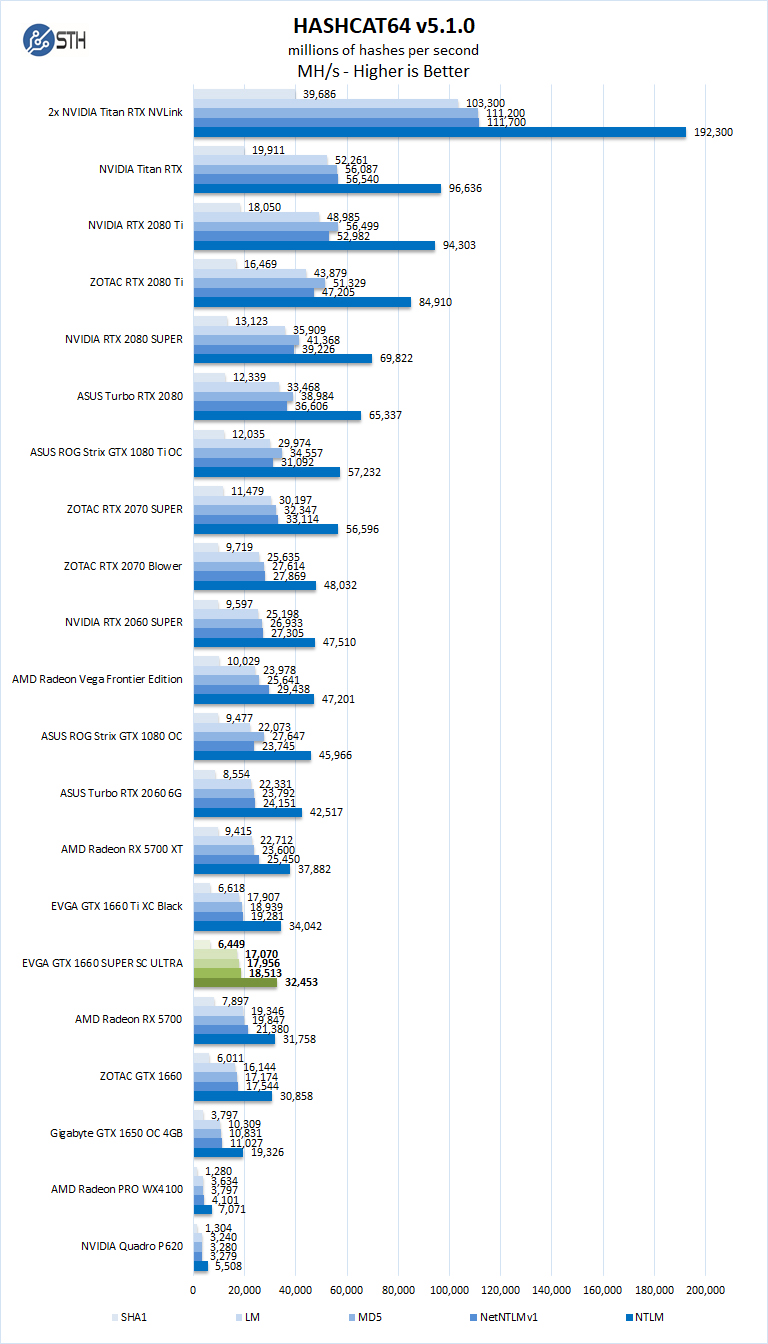
Hashcat64 is a demanding benchmark which heats up GPU’s. Here we are seeing close performance to the AMD Radeon RX 5700 a card that costs $100 more.
SPECviewperf 13
SPECviewperf 13 measures the 3D graphics performance of systems running under the OpenGL and Direct X application programming interfaces.
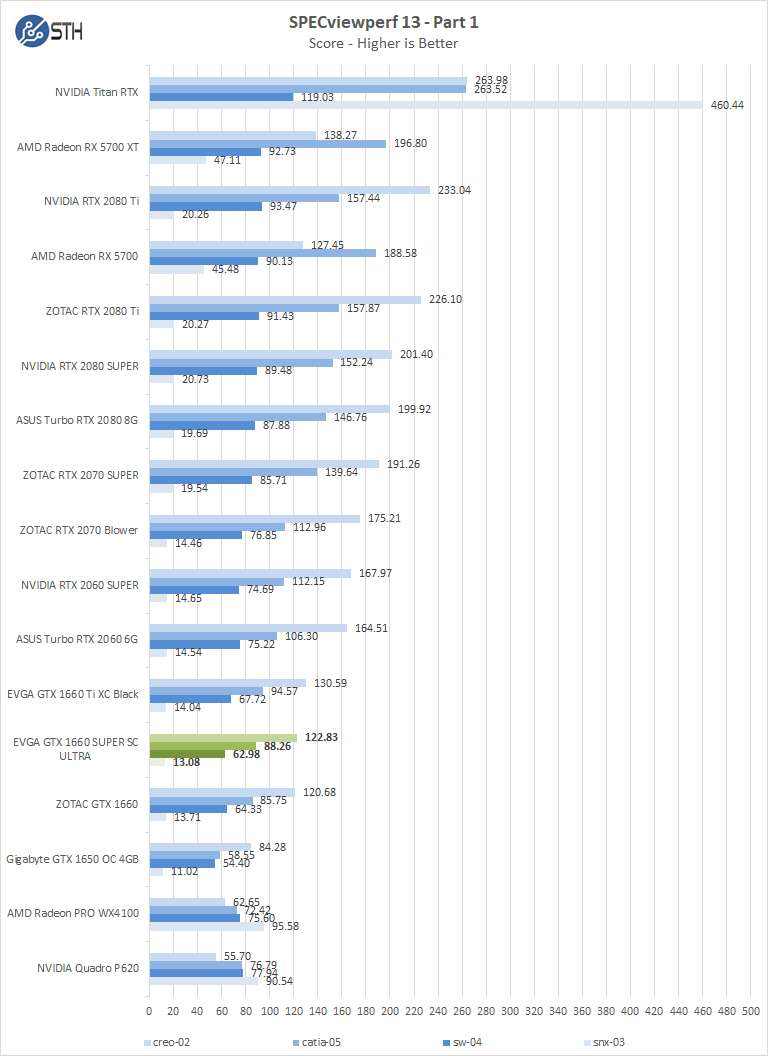
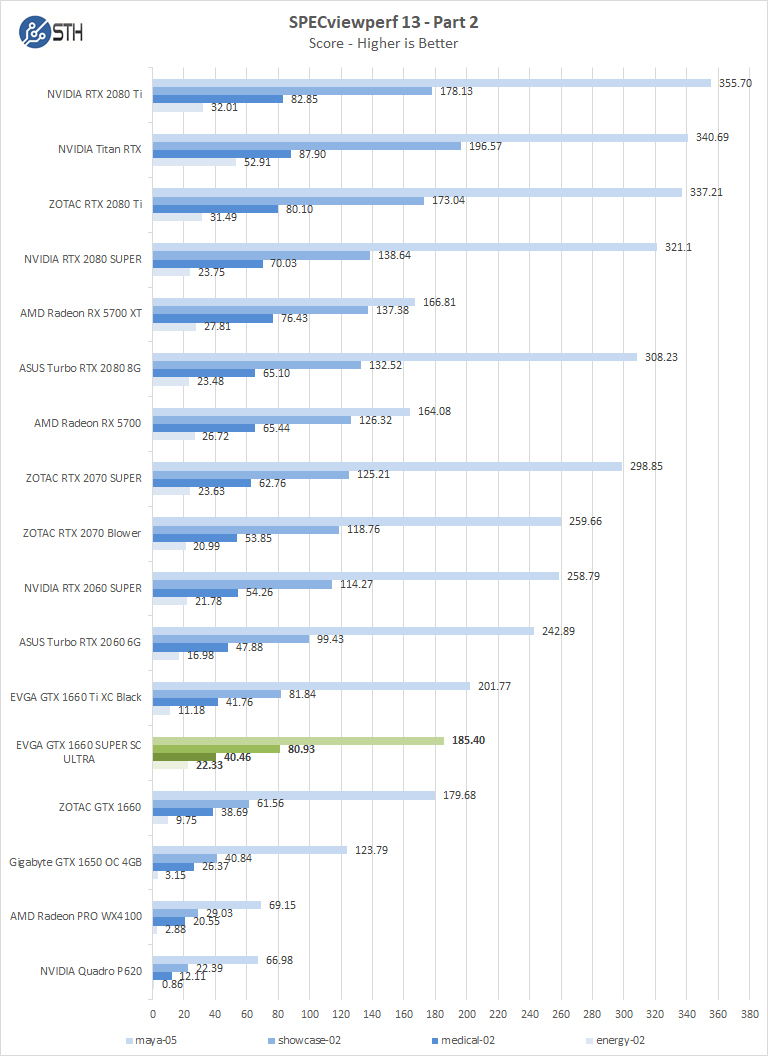
These results are unlikely to push someone from the GTX 1660 to the Super version. At the same time, there is a consistent improvement. Further, if you look at some of the sub-tests such as showcase-02 and energy-02, there is a ~30% to 130% uplift. Memory bandwidth matters to an enormous degree in some cases.
Let us move on and start our new tests with rendering-related benchmarks.




Being a “compute card” isn’t an excuse of putting DVI-D port into it. It should be common to have 3x DisplayPort and 1x HDMI.
@Bull
Lots of 144Hz gaming monitors sold a few years back used an out-of-spec DVI-D input that requires more power than a USB-powered Displayport to Dual-Link adapter can provide.